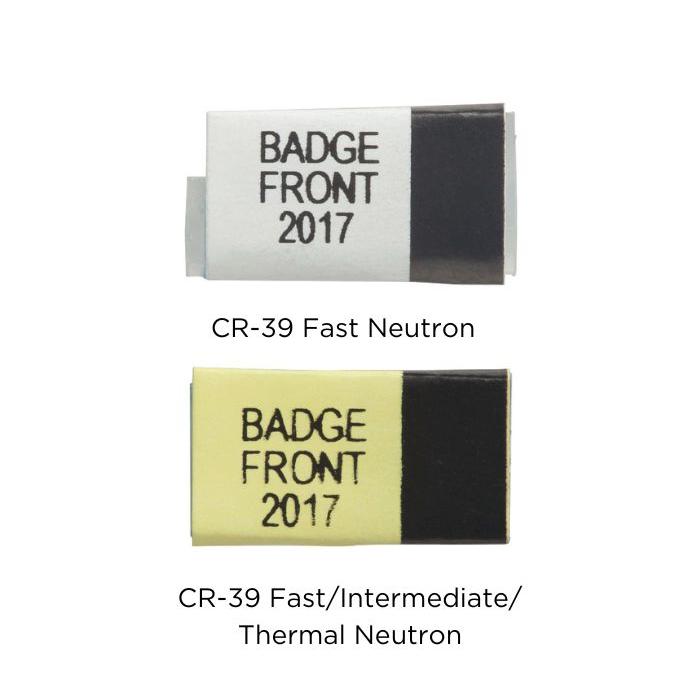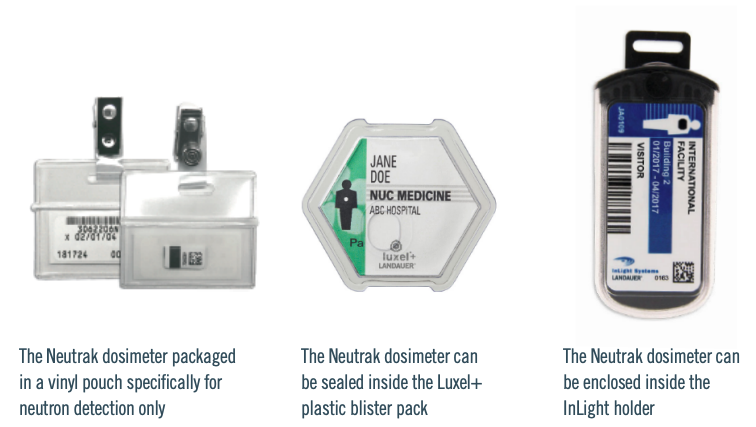
Neutrak® Neutron Dosimeters
LANDAUER Neutrak dosimetry service provides neutron radiation monitoring with CR-39® and Track Etch® technology. The Neutrak detector is a CR-39 (allyl diglycol carbonate) based, solidstate nuclear track detector that is not sensitive to x, beta or gamma radiation and can be packaged specifically for neutron detection only or as a component of another dosimeter such as Luxel®+ or InLight® to include x, gamma and beta radiation monitoring. The CR-39 is laser engraved for permanent identification and wrapped with a 2-D bar code to assure efficient chain-of-custody.
LANDAUER’s comprehensive full service includes automatic exchange out of dosimeters for each wear period, processing and analysis, data management, reporting of exposure results, direct computer access via the Internet to LANDAUER’s database for shipment tracking and customer service and technical support programs.

